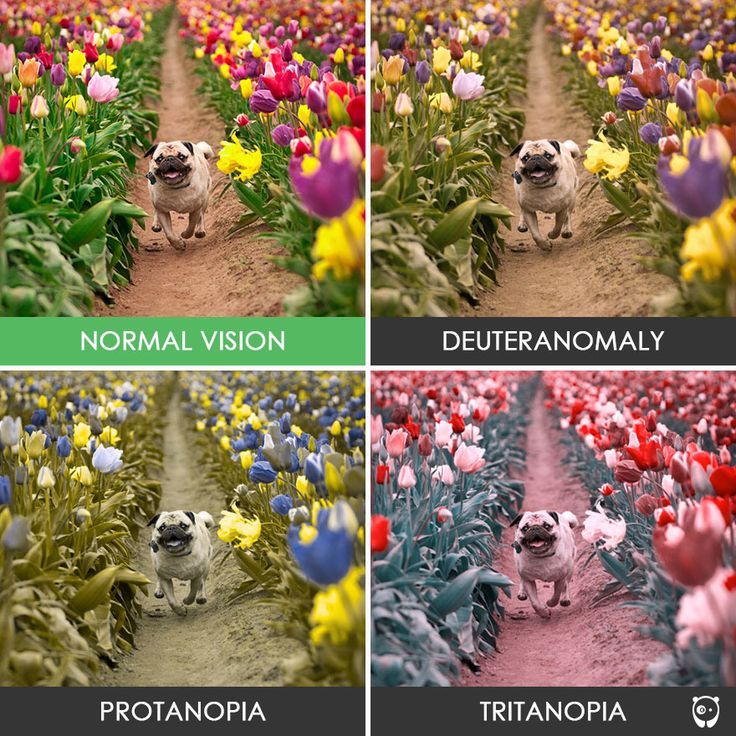
Imagine walking into a fruit market and struggling to tell if a tomato is ripe or not. Or picture yourself in a classroom, where diagrams and charts are meaningless blobs of color. For millions around the world, this is a daily reality—living with color blindness, or more accurately, color vision deficiency (CVD).
Despite how common it is, color blindness is often misunderstood or overlooked—especially in clinical screenings, schools, and even career counseling. This blog unpacks what color blindness is, how it affects lives, how to detect it, and why it’s time to pay more attention.
What Is Color Blindness?
Color blindness doesn’t mean seeing the world in black and white. It refers to difficulty in distinguishing between certain colors—most often red and green.
Our eyes have three types of cone cells, each sensitive to red, green, or blue light. When one or more of these cone types are absent or not functioning properly, color perception becomes distorted.
 Types of Color Blindness:
Types of Color Blindness:
- Red-Green Deficiency (Most Common)
- Protanomaly/Protanopia: Trouble with red shades.
- Deuteranomaly/Deuteranopia: Trouble with green shades.
- Blue-Yellow Deficiency (Tritanomaly/Tritanopia)
- Much rarer, impacts blue-yellow discrimination.
- Total Color Blindness (Achromatopsia)
- Extremely rare, where the world is seen in shades of gray.
Causes:
- Congenital (genetic; more common in males due to X-linked inheritance)
- Acquired (due to optic nerve diseases, retina damage, or certain medications like ethambutol)
Daily Life Challenges of Color Blindness
Color vision deficiency doesn’t impair vision clarity but deeply affects functionality in daily life.
Clothing and Fashion
Matching clothes or recognizing stains can be difficult.
Food Preparation
Judging ripeness, doneness, or reading color-based expiry indicators is a struggle.
Education
Color-coded maps, graphs, lab results, or colored chalk on a blackboard can become confusing, affecting comprehension and performance.
Driving
While most people with color blindness can still legally drive, interpreting red-green traffic lights or warning signals can be slower and more error-prone.
Careers
Some careers (e.g., aviation, electrical work, defense services, and graphic design) require normal color vision. Students unaware of their CVD may face late-stage disqualifications during exams or job applications.
How Is Color Blindness Diagnosed?
Early detection is key—especially in children. Unfortunately, it is often skipped in basic vision screenings.
Common Tests:
- Ishihara Plates: The most well-known test using numbered patterns in colored dots.
- Farnsworth D-15 Test: Identifies the type and severity of color vision deficiency.
- Anomaloscope: Highly accurate but rarely available outside specialized clinics.
Color Blindness in Children
Many children with CVD go undiagnosed until it causes confusion in school.
Signs to Watch:
- Frequent complaints about colors not matching
- Avoiding coloring activities
- Poor performance in subjects like geography or science (due to color-based maps/charts)
How to Help:
- Use high-contrast materials
- Label colors in diagrams
- Inform teachers to make accommodations
- Counsel parents gently with positive, empowering language
Aids, Apps, and Innovations
Technology is opening up new options for people with CVD.
EnChroma Glasses
These lenses claim to enhance color contrast. While they don’t “cure” color blindness, some users report improved color differentiation in natural settings.
Apps & Tools
- Color Blind Pal
- Chromatic Vision Simulator
- Color Grab – helps detect and name colors via phone camera.
Digital Accessibility
Designers and developers are encouraged to follow color accessibility standards—for example, using patterns or labels along with colors in charts or buttons.
Conclusion: Shifting the Lens
Color blindness isn’t a disability—it’s a different way of seeing. With better awareness, screening, and inclusive design, we can help people with CVD navigate the world more confidently.
For clinicians: Make color vision testing a routine part of check-ups.
For educators and parents: Know the signs and support affected children early.
For everyone else: Embrace accessibility and advocate for inclusion.
Because seeing differently… is still seeing beautifully.

